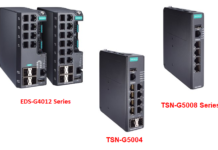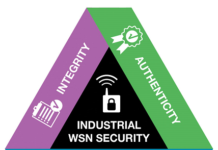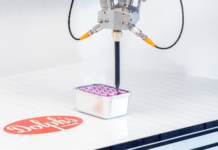
The MOU signed between JTC and ST Engineering will jointly design, develop, test-bed and deploy an Open Digital Platform that can connect to, interact with and control various sub systems within the district. Examples of sub-systems include building management systems, access control and security management systems, urban logistics systems, district cooling systems, pneumatic waste conveyancing systems, sensors and IoT platforms, analytics platforms and data exchange platforms.
Some potential use-cases that users of Punggol Digital District can expect to experience with the implementation of the open digital district
-
The arrival of a person working in the District’s business park buildings can trigger a chain of smart systems working together to ensure a pleasant start to a work day. Imagine this, when the person arrives at the District’s transportation hub, she is securely identified using biometrics, which could send an alert to a restaurant/hawker centre to start preparing her favorite breakfast item. Once the preparation is completed, an autonomous mobile robot/drone can be automatically activated to pick & deliver the food item directly to her office level just as she arrives.
-
After collecting the food item, she breezes seamlessly through the building’s security counter and is transported to her office floor as the access control and security system seamlessly authenticates her identity, automatically activates the elevators and automatically drops her off to the right floor based on her meeting schedule for that specific day. At her office desk, she gets ready for breakfast and her day ahead in a comfortable environment, because her office’s air conditioning and lighting systems have already been automatically adjusted to her preferred settings.
-
When the weather is warm or when there are more occupants in the building, temperature sensors are able to register the increase in room temperature. Building occupants can also provide temperature feedback via a smart app. This data goes to the Integrated Building Management System in the Open Digital Platform, which then adjusts the building temperature according to occupants’ preferences. In addition, building owners are able to obtain cost savings from optimizing energy use of building services.
-
The open digital platform also allows central monitoring and management of traffic congestion in the district. CCTV and traffic video analytics detect traffic congestion, while a smart app allows drivers to provide real-time updates about road conditions. The smart app and public digital displays will then be updated to provide traffic alerts and recommend alternate transport arrangements. Smart traffic lights will also change signal cycles to clear the congestion.
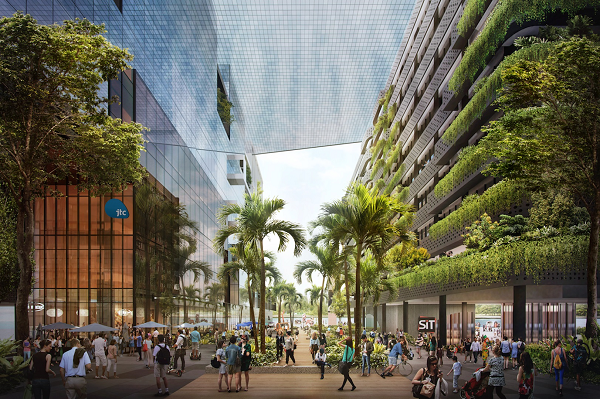
-
Along with the seamless integration and optimization brought about by the Open Digital Platform, data gleaned from the physical infrastructure, urban solutions and digital systems can be accessed and used by innovators to create new solutions to benefit the community.
-
Real-time and historical data from estate and building management systems can be published via an Application Programming Interface (API), on which the community is able to access information to develop digital applications or urban solutions in PDD.
-
There are also plans to have a digital twin of the entire District to simulate the actual operating environment of all equipment and processes. This can help generate a real-time stream of data and at the same time, provide a conducive and safe environment for anyone to test their solutions before implementation.
-
For example, a digital solutions startup could potentially access the operating data of air conditioning systems through the Open Digital Platform’s API. From data such as utilization rates, electricity consumption and even equipment breakdown information, the company could discern trends and create digital solutions to allow the air conditioning systems to be operated even more optimally. The digital solutions could then be tested and refined further in the District’s digital twin before they are implemented in the actual environment.
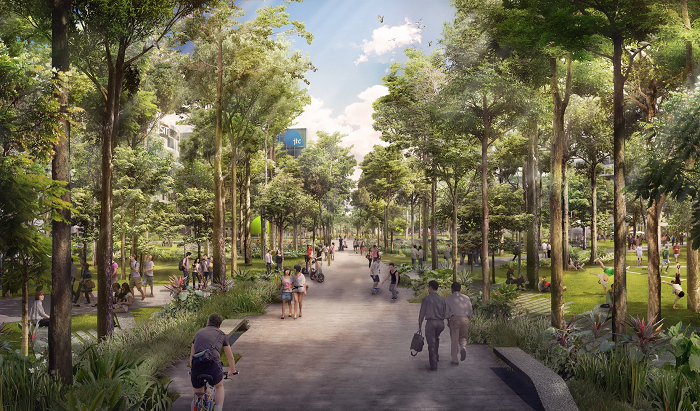
-
Making data available via the Platform’s API, will essentially allow and empower the community of businesses, workers, researchers and students to contribute new solutions to enhance the District while minimizing disruptions to real world operations when new solutions are piloted and implemented.



